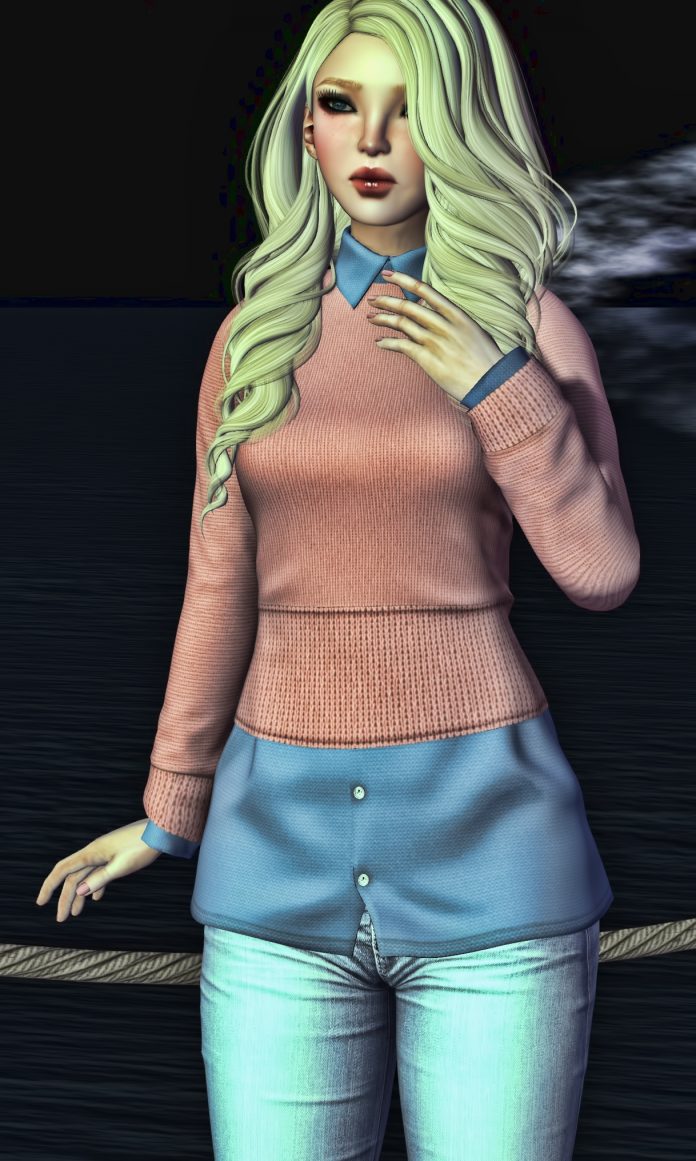DC’s Absolute Universe is the biggest thing in comics right now. Set in an alternative universe where everything is influenced by Darkseid energy, it’s a universe driven by turmoil and challenge where the heroes are the underdogs rather than the powerful figures fans are accustomed to. With five current ongoing series, readers get to explore these darker versions of some of DC’s most iconic characters, but the biggest of them might be Batman. Absolute Batman, from writer Scott Snyder and artist Nick Dragotta, has been a force in comics, seeing massive popularity among readers as is redefines the Dark Knight and many of the iconic characters in his world in unexpected and sometimes shocking ways.
Videos by ComicBook.com
But while Absolute Batman is undeniably a good comic and doing some very interesting things with the Batman mythos, there’s something about the book that no one is really talking about. No one is really talking about how, even with the sweeping changes to Bruce Wayne and the reimagining of his origins that are bringing something different to what might be the most popular character in comics, Absolute Batman is also simultaneously maintaining and even feeding into an overdone status quo that the hero has been stuck in for years. The truth is, Absolute Batman is just yet another gritty Batman story that relies on bleakness and darkness rather than take real chances that would break new ground and genuinely reinvent DC’s biggest hero.
Absolute Batman Takes Some Big Swings, Just Into Familiar Territory
Absolute Batman is, on its face, a very different sort of Batman story. Readers are let into the world of a younger, blue-collar Bruce Wayne whose origin is still rooted in traumatic parental loss, but loss that is slightly different. This Bruce Wayne lost his father as a child when the man was murdered protecting Bruce and other children on a trip to the Gotham Zoo. This leaves Bruce to grow up with his mother, but the death of his father is still a devastating loss. This Bruce also grows up in Crime Alley rather than a mansion just outside the city and, eventually, he gets a university scholarship that allows him to study and train for his ultimate plan to wage war against Gotham’s crime as Batman. The story sees Bruce doing everything on his own with very limited resources and also introduces changed versions of some of the characters familiar to the overall Batman mythos. His classic rogues are actually his childhood friends, and Alfred Pennyworth is an agent sent to Gotham to investigate a criminal group and his biggest villains are also reimagined with the Joker appearing as a wealthy man.
But while these changes are significant, they also fall into some very familiar patterns. While Absolute Bruce is presented as being working class and using his day job to support and further his work as Batman, he still has access to tech and resources (and knowledge) well beyond what he should conceivably have access to. The result is a change that just feels like another version of the downplaying or stunting of Bruce’s wealth, which is something that Batman stories have done over and over for years and, most recently in “Joker War”.
The characterization of Batman’s rogues also falls into familiar tropes. While some of the foes start out being reimagined as Bruce’s childhood friends, they’re all tortured and broken by Bane, clearly setting them up to be antagonists for Batman as Absolute Batman continues. There is also the “this is all Batman’s fault” trope that comes into play here, as it’s revealed that the reason Bane is messing with any of them in the first place is Batman. Bane wants to break Batman’s friends in order to break him. And you can add that to the rehashed tropes list: breaking Batman is a story that has been done ad nauseum in comics in stories such as “Knightfall” and “City of Bane” to the point that Bane is almost a one-note character whose plans make no real sense. Repeating that here starts to feel repetitive once you take off the shiny “Absolute” of it all.
Nobody Wants To Talk about the Harsh Truth of Absolute Batman
The Dark Rebirth: Absolute Batman’s Bold Reinvention
Absolute Batman isn’t just another Batman comic. It marks a groundbreaking reimagining of the Dark Knight mythos, crafted by writer Scott Snyder with vivid art by Nick Dragotta. However, beneath the hype and striking visuals lies a series of uncomfortable truths that fans and critics alike have been hesitant to openly discuss. While absolute Batman boldly introduces innovative storytelling and new character dimensions, it also challenges long-standing traditions and expectations, sometimes alienating loyal readers.
Harsh Truth #1: The Mythology Shift Can Be Disorienting
One of the biggest points of contention in Absolute Batman is how dramatically it alters Batman’s foundational mythology. For decades, fans have been deeply attached to Gotham’s familiar landscape, Batman’s psychological depth, and his code of conduct. Absolute Batman tears down this established framework and rebuilds it with radical changes that can feel disorienting or even unrecognizable.
- New backstories and motivations diverge from classic origins.
- The Batmobile and gadgets reach a level of extremity bordering on science fiction.
- Familiar characters behave in unexpected or controversial ways.
While some readers celebrate these fresh takes, others feel these risks come at the cost of the emotional resonance and gritty realism that defined earlier Batman stories.[[3]](https://www.ign.com/articles/9-ways-absolute-batman-reinvents-the-dark-knights-mythology)
Harsh Truth #2: Introduction of Antiheroes Creates Complex Polarization
Absolute Batman #13 notably introduces two classic DC antiheroes, including a bold reinvention of Catwoman and a new take on Harley Quinn. These characters are no longer just sidekicks or adversaries-they come packed with fresh, often darker motivations and backstories that overlap intricately with Batman’s new universe.[[2]](https://www.slashfilm.com/1997524/absolute-batman-dc-antiheroes-introduction-catwoman-harley-quinn/)
although these introductions add layers of complexity, they also:
- Challenge long-held perceptions of Batman’s moral world.
- Blur the lines between heroism and villainy.
- Force readers to grapple with ambiguous loyalties and motivations.
This depth is powerful, but it complicates the otherwise black-and-white worldview many fans enjoy, leading to mixed receptions.
Harsh Truth #3: Controversial Storytelling and Pacing issues
Absolute Batman’s ambition sometimes results in pacing issues and storytelling choices that frustrate readers. Its attempt to blend surreal elements, psychological drama, and high-octane action sequences does not always align smoothly throughout the series.
- Rapid jumps in narrative may confuse readers unfamiliar with the new universe.
- Excessive focus on elaborate artwork sometimes sidetracks plot advancement.
- Multiple new characters and antiheroes crowd the storyline, diluting Batman’s central role.
Fans expecting a tight, linear detective story with clear stakes might potentially be disappointed by this sprawling epic format.
Table: Comparing Classic Batman traits vs Absolute Batman Changes
| Classic Batman trait | Absolute Batman Reinterpretation |
|---|---|
| Stealthy, grounded crime fighter | Near-superhuman abilities with sci-fi tech overload |
| Clear moral code and no-kill rule | Blurred ethics with moral ambiguity and antihero alliances |
| Familiar rogue’s gallery with defined roles | Reimagined antiheroes reshaping Gotham’s power dynamics |
| Dark, gothic atmosphere | high-tech, experimental visuals and surreal settings |
Harsh Truth #4: Fanbase Divisions and Heated Debates
The dramatic reinvention has sparked divided opinions in fan communities. Discussion forums reveal deep splits:
- Traditionalists argue that Absolute Batman betrays batman’s core identity and alienates longtime readers.
- Progressives applaud the fresh vision, complexity, and willingness to take risks.
- some point out that the new series feels like two merging universes rather than a cohesive whole.
These divisions make Absolute Batman a lightning rod for controversy, which few mainstream outlets openly analyze beyond surface-level reviews.
Practical Tips: How to Approach Absolute Batman Without Disappointment
If you’re considering Absolute Batman, keep these practical strategies in mind to maximize your reading experience:
- Adjust expectations: Understand this is a reinvention, not a continuation of classic Batman lore.
- Focus on the bold storytelling experiments: Appreciate the new narrative style rather than expect traditional detective work.
- Engage with fan discussions: join forums or social media groups to gain perspective on divisive plot points.
- Explore related Absolute series: Titles like Absolute Catwoman provide enriching context for the evolving Gotham universe.[[1]](https://comicbookclublive.com/2025/10/03/dc-comics-preview-absolute-batman-13/)
Behind the Scenes: Scott Snyder’s Vision and Influence
Scott Snyder’s involvement as writer is a major reason Absolute Batman undertook such a radical conversion. Known for pushing boundaries in comics, Snyder aimed to reimagine Batman for a new era, injecting unpredictability and complexity. His collaboration with artist Nick dragotta brought a unique, vibrant style to the pages that both captures and challenges the reader’s inventiveness.
“Absolute Batman reshapes the archetype by exploring the darkness within, not just outside the cowl.” – Scott Snyder (interview excerpt)
Absolute Batman and the Future of Gotham comics
The harsh truths of Absolute Batman illustrate the growing pains of evolving a beloved icon. This series is a herald for the future of Gotham stories, where rigid hero-villain binaries blur and every character operates in shades of gray. Whether readers eventually embrace or reject this vision, Absolute Batman undeniably sets the stage for more daring and complex storytelling in DC’s flagship universe.
Absolute Batman Is a Great Read But It’s Really Every Other Dark Batman Story With a New Coat of Paint
To be clear, Absolute Batman is a great read and a great Batman story. Snyder does a fantastic job of crafting the tale and Dragotta’s art and character designs are insane — the Absolute Joker design is total nightmare fuel in the best possible way. The quality of the title is not in question. But with that being said, Absolute Batman really isn’t that new or different in the way readers may have expected it to be. It is, at its core, a gritty, dark story that treads familiar paths of tearing down Batman, making everything his fault, and existing in an environment where it seems like nothing positive could actually happen, a world where Bruce will forever be caught in a cycle of pain and violence and suffering that is really no different than his life in the main universe. The fine details have changed, but everything else is really the same.
That is, perhaps, the harsh truth of Absolute Batman. It’s not really that much different from most Batman stories that DC has given readers in recent years. Instead of being a genuinely different take on DC’s most iconic character, Absolute Batman is instead just another gritty reboot, just one that happens to have a bigger, bulkier vigilante with a less fixed moral code. It’s nothing new, which given how interesting and creative the other Absolute titles are, feels a little like a letdown. Absolute Wonder Woman and Absolute Superman are both very different from their main universe counterparts. Absolute Martian Manhunter is a wild reinvention. Absolute Batman had an opportunity to go that route as well and completely redefine the character. Instead, readers get a book that continues the idea that Batman can only be dark, gritty, and kind of miserable. It’s just doing it in a well-crafted, fun to read way.
What do you think? Leave a comment below and join the conversation now in the ComicBook Forum!


